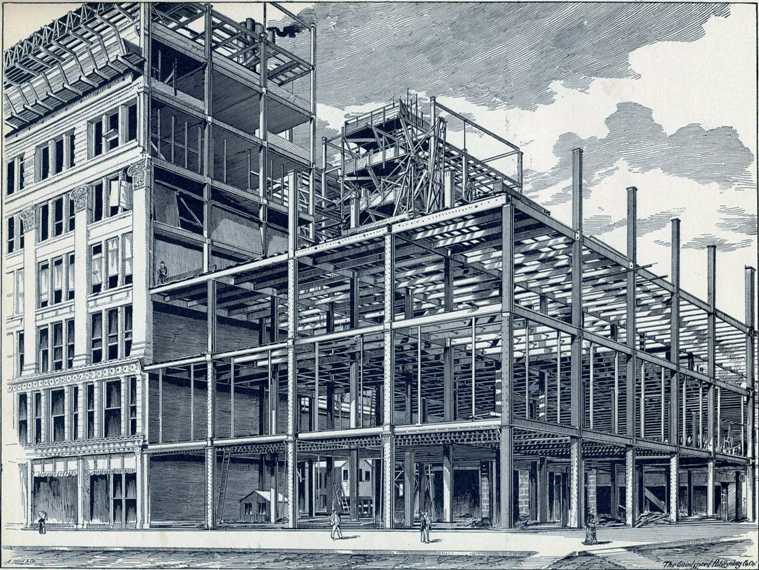The modern high-rise city would be impossible without the skeleton construction method of building skyscrapers. In a building using skeleton construction, a skeleton of steel beams holds the floors, and the interior and exterior walls up. The result is much lighter buildings which can go many stories into the sky.
The exterior walls do not support the weight of the building and may be finished in stone, glass, metal or any other material desired.
This contrasts to the previous method of having masonry walls support the entire building. According to Carl W. Condit in The Chicago School of Architecture, masonry buildings were thought to have a practical height limit of about 10 stories. As the exception that proves the rule, the Monadanock Building is the world’s tallest all-masonry office structure. It is 16 stories tall and has walls six feet thick at the base.
Although other cities also claim credit, Chicago's Home Insurance Building (1884-1931) has been called the world's first skyscraper. Chicago is also credited with having led the world in skyscraper design in the later part of the 19th century.
Skeleton construction has evolved to encompass additional methods such as reinforced concrete skeletons. One example is the 645 foot tall Lake Point Tower, completed in 1968. Its weight is held up by a reinforced concrete elevator core.
Chicago is also the birthplace of the next BIG, TALL, GIGANTIC thing in skyscraper design. I'll discuss it in my next post.




Add a comment to: Skeleton Construction: Technology That Changed Chicago